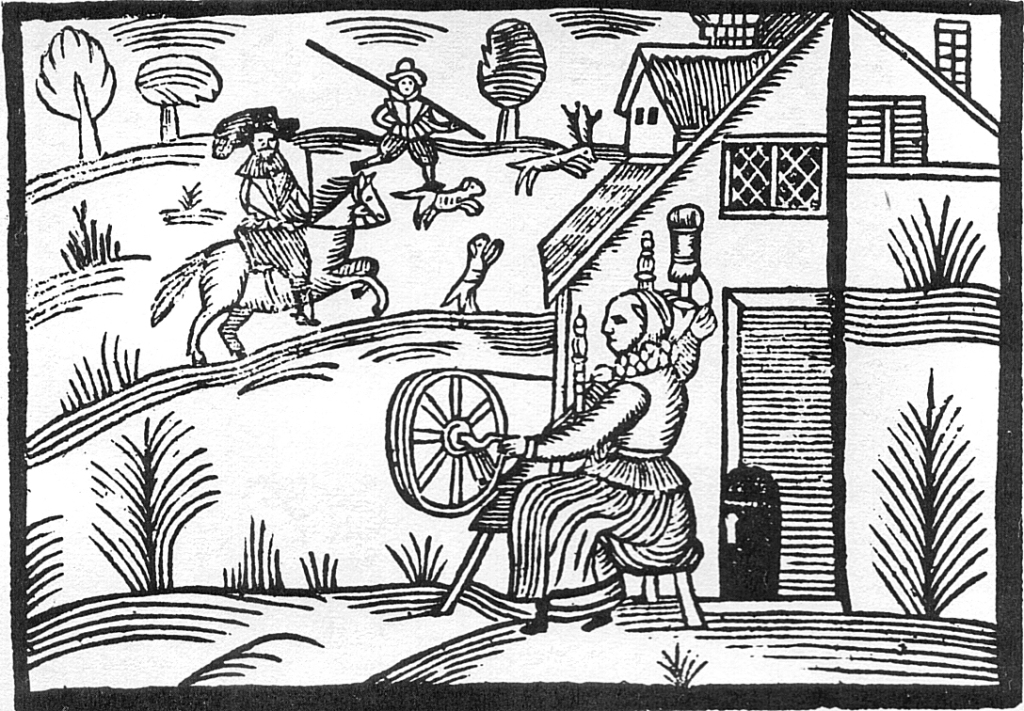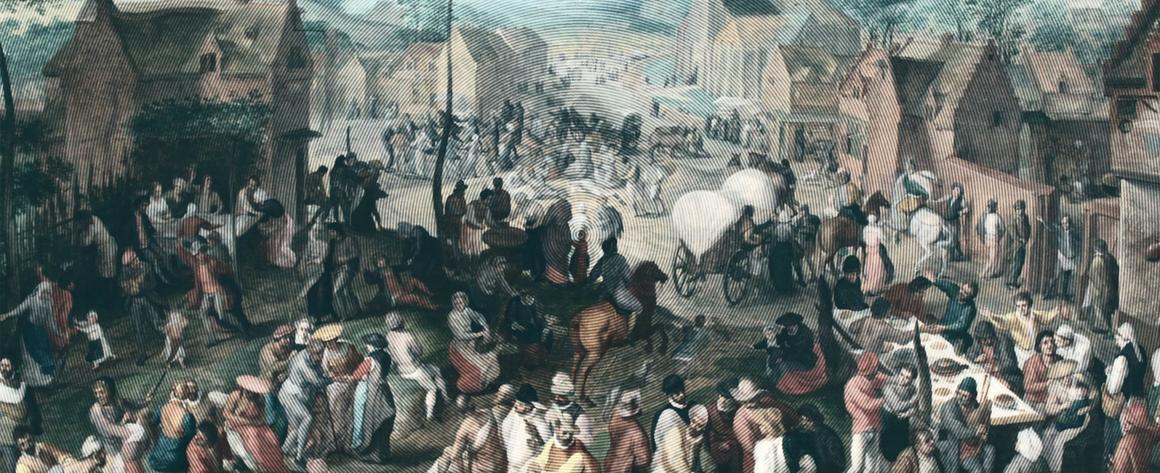Markets before capitalism
In her seminal work “The Origin of Capitalism,” the late scholar Ellen Meiksins Wood took on the credo that “capitalism emerged when the market was liberated from age-old constraints and when, for one reason or another, opportunities for trade expanded.” Schoolchildren in the US are commonly taught to conceive of the broad variety of political-economic systems, both those extant and those possible, as divisible into two essential and opposing categories: “markets” and “planning.” “Markets,” in this formulation, offer opportunities for commerce which make people free, while “planning” oppresses people through inefficient resource rationing. It is taken for granted that “markets” and “capitalism” are synonymous; likewise “planning” and “socialism.” The problems with this formulation are legion, but particularly egregious is its utter ahistoricity: inconveniently for the schoolteachers formulation, markets predate capitalism by thousands of years.
Almost from the very beginning of human history, there were markets. As early as the Ice Age, long before the rise of cities with permanently settled populations, there were specialized meeting areas for ritual and trade between groups. When hunting and gathering bands began to settle on land to cultivate crops and domesticate animals, they created the conditions to produce something unprecedented: an economic surplus. By the Bronze Age, people had amassed sufficient “surplus food, oil, and wool,” as economic historian Michael Hudson writes, “to support a permanent superstructure of handicraft, mercantile and administrative occupations.” Temples became the first public institutions, functioning variously as storage facilities for the surplus resources of their communities, gathering places, trading depots, refuges from local feud justice, establishers of contract law, enforcers of trade obligations, and sponsors of standardized weights and measures.
Temples also employed the labor of dependents: war widows, orphans, the blind and infirm, and others who could not function in normal family contexts. Housing the workshops where these dependents wove, Mesopotamian temples consigned textiles to merchants under instructions to trade them abroad for raw materials not found between the Tigris and Euphrates: metal, stone, and hardwood. To facilitate this export enterprise and regulate the markets it sponsored, Sumer developed most of the major instruments of modern commerce during roughly the third millennium BCE — money, credit, interest, contracts, and legacies — and established profit-seeking mercantile operations as far away as Anatolia and the Indus Valley. Thus, roughly 4,000 years before the emergence of capitalism, we were economizing our resources by haggling in markets which connected people thousands of miles apart.
Deposit banking, insurance policies, corporations, municipal bond markets, and, what was crucial for all of these, double entry bookkeeping, were developed later on, but still well before capitalism, in medieval Venice between about the eleventh and fifteenth centuries CE. From there, merchants would acquire and peddle wares on an intercontinental scale: after Marco Polo extended the silk route to Venice, the lagoon nestled in the pit of the Adriatic Sea became the world’s chief hub of trade in commodities, bullion, and various financial instruments, with a market network connecting West Africa to Siberia, the South Pacific to England. As Wood points out, the feudal system was compatible not just with “advanced urban cultures, highly developed trading systems, and far-flung commercial networks” but indeed “profit-seeking middlemen, even highly developed merchant classes.” None of these, it follows, should be confused for, nor even considered evidence of, capitalism. Capitalism isn’t distinguished by its capacity to provide market opportunities, but by the imperatives the market places on its unique system of production.
Capitalist markets
It wasn’t until hundreds of years after Marco Polo’s travels that the dramatic transformation of the system of production began—and in a curious place. Wood demonstrates that the capitalist “laws of motion” did not emerge in urban commercial centers, as is normally supposed, but in the countryside. Specifically, the English countryside. English landholding was inordinately concentrated, so “an unusually large proportion of land was worked not by peasant-proprietors but by tenants,” as Wood explains. For most of the feudal age, English tenancies were “Freehold leases,” with rents fixed by a legal or customary standard, but by the sixteenth century, a growing number were “Copyhold leases,” auctioned by landlords to the highest bidder, their rental value set at whatever the market would bear. The more competition there was in the market for rental land, the more notice landlords and their surveyors began to take of the “value above the oulde Rentes” that could be extracted through this market. And so England underwent great waves of land enclosure, separating the masses from direct access to the means of their own subsistence.

At this point, in addition to competing in a market for consumers, tenants were obliged to compete in a market for access to land. In the system emerging out of the particularly English invention of a land-rent market, farmers were subjected to a “systematic need to lower the costs of production in order to prevail in price competition.” Those who failed to compete in this market found themselves dispossessed of all but their own capacity to perform labor, which they flocked to cities to sell, or else to starve.
This, and not the availability of markets, is the essence of capitalism, the engine motoring in its depths. From this imposition, and thus this dispossession, capitalism sprang to life. Now the masses were at the mercy of a job market to obtain the means to reproduce themselves socially. Now the process of production was systematically subordinated to market imperatives: “competition, accumulation, and profit-maximization, and hence a constant systemic need to develop the productive forces.”
These imperatives, in turn, give capitalism its ability (and charge it with the necessity) to relentlessly expand in unprecedented ways and degrees. “It can and must,” as Wood insists, “constantly accumulate, constantly search out new markets, constantly impose its imperatives on new territories and new spheres of life, on all human beings and the natural environment.”
Markets after capitalism
The key to imagining what post-capitalist markets might look like, according to David Schweickart, is to discard the unitary idea of “markets.” Too general a term to be useful, markets, Schweickart suggests, should be divided into three types: markets for goods and services, capital markets, and labor markets. The first sort was compatible with feudalism, and it can be compatible with socialism: with solid regulation, price discovery through market clearance is a useful tool in signaling demand and avoiding the shortages in goods and services that may result from clumsy, or capricious, central planning.
But the other markets are not nearly so capable in the resource-allotment division. Capital markets are prone to careening wildly between booms, when they allot far too many financial resources, and busts, when they allot far too few. Labor markets are volatile because of this careening, but even in the boom times, commonly maintain a reserve army of unemployed workers amid back-breaking overwork. It is these capital and labor markets, therefore, that Schweickart contends must be socialized to give rise to the next system. To these, I’d add two that might broadly be thought of as capital markets, but which beg different, if similar, solutions: the market for intellectual property and the market which birthed capitalism, land.
There are basically two strategies for de-marketing labor, and they work best together. The first is the aggressive encouragement of worker co-ops, including buying out (not bailing out) failing firms and leasing them to workers, giving workers the right to buy out their shops as an alternative to closure, and providing public financial and technological support for start-up co-ops. The more workers can become owners, the less they’ll have to work for wages, thus shrinking the labor market. The second strategy is to provide the option to exit the job market by filling out the welfare state: public health care, education, and “last resort” guaranteed employment, capped off with a basic income to subsidize culture- and community-production. The ability to survive without submitting to the dictates of the job market would incapacitate the capitalist imperative to compete with everybody else.
Co-ops also help to de-market capital, relocating ownership from stock market gamblers who are physically and sentimentally remote from the firm’s operations to workers who inherently give a damn about the fate of the firm and the labor they deploy for it. In addition to this, it is crucial to expand our public wealth funds in number and scope. The Alaska Permanent Fund, CalPERS, and even the Social Security trust funds are pools of capital whose income streams (dividends and interest) flow to the public. A national sovereign wealth fund and/or many regional ones would shrink capital markets. (It might make sense to emulate Alaska, using the fund to outlay the aforementioned basic income.) For best results, this should be held together by a public banking system, most easily run through the postal service, featuring a publicly-controlled mobile payments system.
De-marketing intellectual property is especially exhilarating, because we can skip the socialist step of moving ideas from private to public ownership, and go straight to the communist state of non-ownership. Ideas such as pharmacological discoveries, software developments, and works of media are immaterial, their digital representations as sound, video, image, text, etc. files infinitely reproducible at negligible cost. In order, therefore, to effect their decommodification, the government only needs to take a laissez faire approach to enforcing their patents, copyrights, etc. Beyond possibly brief, non-transferable licenses for authors and inventors (as the founders intended), there is no need for the government to impose artificial scarcity, without which, an infinitely abundant product will approach its “correct consumer price”: zero dollars.
Lastly, there are also already existent vehicles for democratic land management and development that can allow us to undo the initial act of capitalism and de-market land. Foremost, in recognition of the fact that the price of a location is determined by the desirability of the surrounding community, the government can impose a fee on land-owners equivalent to the ground rent they derive. Especially elegant would be to have these fees provide the initial investment into the public fund paying out the basic income, thus compensating everyone for their exclusion from the locations in question. Additionally, the government should devote public financing and its power of eminent domain to energetically foster Community Land Trusts. Perhaps most importantly, the government should massively grow the public housing stock so that it does not merely provide poor people undignified living conditions, but rather houses major swaths of large cities in modest, comfortable units. This last is probably the most difficult, seeing as how the federal government is prevented by law at the moment from financing public housing.
A socialism like this, with capital, labor, ideas and land brought out of the market and into the democratic sphere, could accommodate markets in goods and services without imposing on all of society the imperatives unique to capitalism. Mass liberation from capitalist market imperatives would effect reparations for the dispossession that incited the capitalist laws of motion. The system would no longer have the necessity, or perhaps even the means, to impose its relentless imperatives on you and me and the whole wide world. Then what will our schoolchildren think?




